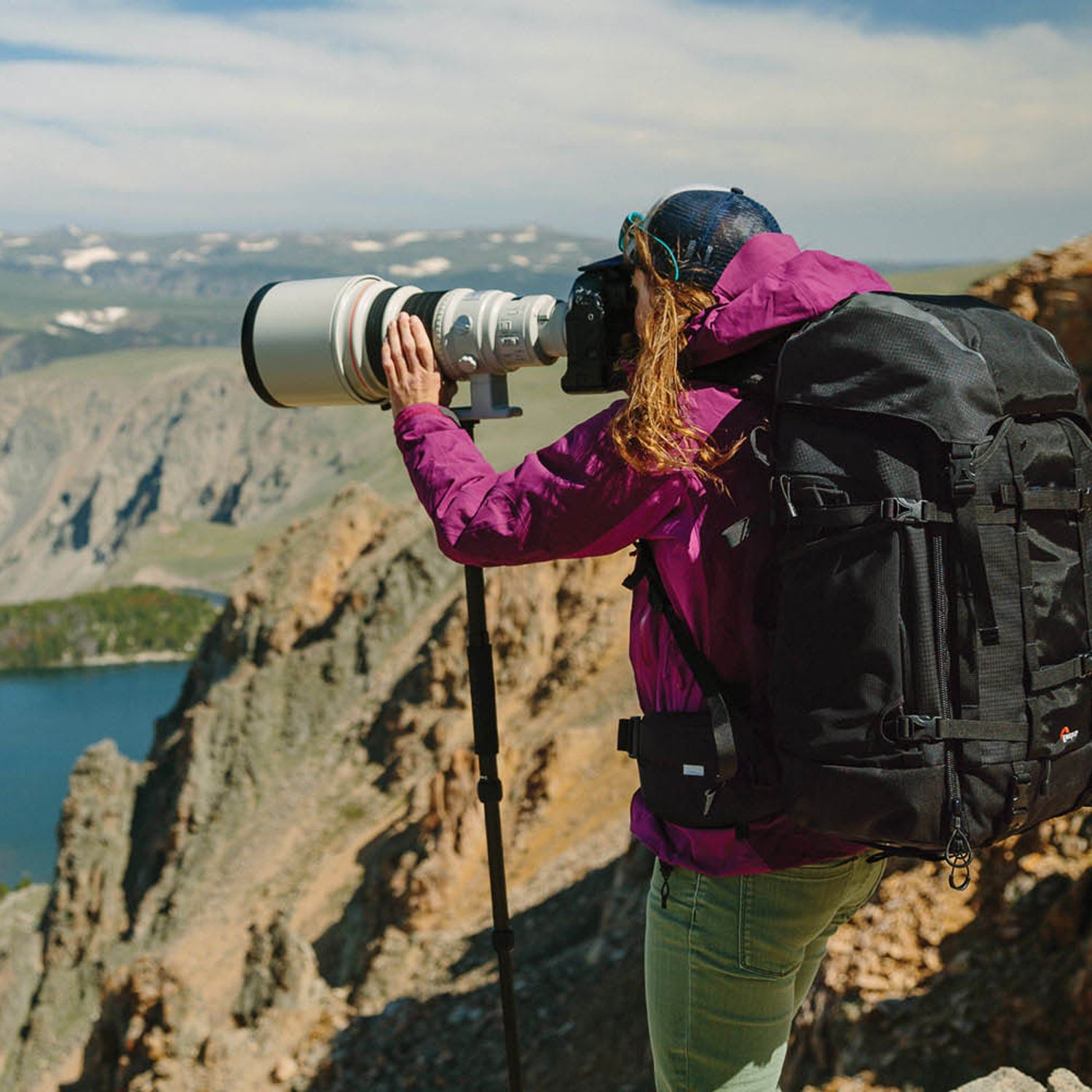Most of the year, Kt Miller lives in “podunk [also known as Cooke City],” Montana. Population: 76. The nearest grocery store is an hour and a half away. In the winter, the only way to reach her one-room, 12-by-14-foot cabin is to drive down a one-way, dead-end road through Yellowstone National Park. And that's exactly how she wants it. “I try to minimize travel as much as possible,” she says. Not traveling too much is simultaneously one of her biggest and most meaningful challenges. Miller has totally escaped the desk-bound life in favor of high-adrenaline pursuits, but she's also her own harshest critic when it comes to championing her other passion: sustainability.
As a , accomplished backcountry skier, and environmentalist, the 25-year-old has found herself in far-flung, high-altitude locales plenty often. “I prioritize my passion projects,” she says of her enviable resume. That includes banking a lot of vertical, from Alaska’s Chilkat Range to the Aiguille du Midi in the French Alps and a descent from 20,000 feet on Denali. She was also the in Romania’s Bucegi Mountains and the in Montana’s Absaroka Mountains. And she’s parlayed her interests into funding from pro-adventure companies, shooting for the likes of Skiing magazine and Patagonia as an ambassador for Dynafit and Lowepro.
Miller’s talent for capturing wild winter adventures also helps her tell a sobering story about climate change. That intersection revealed itself most plainly in early August, when Miller criticized the helicopter-skiing industry in an . She’d spent two seasons in her early 20s trying to break in as a heli guide, but objected to what she saw as “frivolous” fuel-chugging (one of the helicopters at her resort consumed about 45 gallons an hour). “Is heli-skiing okay if you only do it a few times a year, but the rest of the year you act as an environmentally aware citizen?” she wrote. “I don’t think so.”
“I’m shorter and 100 pounds lighter than most of the people I go out with, but I hold myself to really high standards. I train really hard. I think that’s won me a lot of respect with the people I work with.”
Miller is the first to say that she’s not perfect, but she now makes intentional choices for sustainability in her career moves. For one thing, she’s now a media specialist for —Miller credits a volunteering stint with the organization, between her first and second heli-skiing seasons, as her environmentalist “lightbulb moment.” Every fall, she helps scientists execute a in the Canadian tundra that shows polar bears migrating for seal-hunting season. It’s useful real-time information about how the bears interact with changing sea ice conditions—and yes, it’s often adorable. The programming reached about 1.5 million viewers in 2013 alone. Miller’s also big on “human-powered adventure.” Why drive when you can bike? Why snowmobile when you can hike? She hopes the images that result from those expeditions reflect a wildness that strikes a chord—and fuels dialogue.
Up next on her radar is the mother of all climate change meeting grounds: the United Nations Climate Change Summit, which takes place December in Paris. Miller's not attending in person (“There's the whole flying-across-the-world-to-solve-climate-change dilema…”), but she joins a growing rank of winter athletes to save the landscapes they love. “I’m hopeful the talks are going to be productive,” she says. “If I ever want to have kids, I better be, right?”
Kt Miller on…
The reaction to her criticism of heli-skiing: I got a lot of responses. Which, from my perspective, was a good thing. That was the intent. A lot of people pointed out my flaws. It’s totally true. I mean, I get on airplanes and go on trips. We are all hypocrites. The reality is, a lot of people lose hope and think the only solution to climate change is that we go back to being cavemen and hunter-gatherers. But we have to think smarter.
Making a name for herself in the male-dominated adventure photography industry: I don’t have the answer people want to hear in some ways. I’m just going to do what I want to do—I don’t really care who else is doing it. You have to prove that you’re not a liability—that you can keep up. I’m shorter and 100 pounds lighter than most of the people I go out with, but I hold myself to really high standards. I train really hard. I think that’s won me a lot of respect with the people I work with.
The most important steps a person can take for the environment: Someone should invent a way to suck carbon out of the atmosphere and turn it into a non-harmful substance. But if you can’t do that:
- Don’t underestimate the power of small individual actions, like bringing reusable bags to the grocery store and turning off your lights.
- Voting with your dollars is huge. Everything you buy is a vote: what kind of milk you buy, where you get your groceries, what clothing you wear and what it’s made of.
- Let the government and public leaders know it’s important to us. One way to do so: Tweet #actonclimate.


